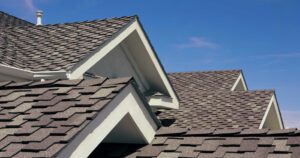Nashville General Contractors are licensed professionals who oversee construction projects. They manage everything from remodeling residential homes to building skyscrapers. They take on a variety of tasks throughout each project and bring in subcontractors, like plumbers and carpenters, to complete specialized work.
They are the linchpin that holds together all aspects of complex building endeavors. By effectively managing project schedules, budgets, and risks, they ensure that projects are completed on time and within scope.
A GC’s primary responsibility is to serve as the liaison between construction owners, designers, and specialty contractors (also known as subcontractors). As such, they take on significant liability for project delays or overruns, safety compliance on-site, and the quality of the finished product.
Having someone in charge who knows the entire project’s timeline, budget, and specifications can save you a lot of time and money. Oftentimes, a general contractor will use software like CoConstruct to streamline communication and track the progress of every step in a project. This eliminates any confusion and provides a centralized point of contact for any questions or concerns that may arise throughout the build.
Managing a construction project requires a high level of expertise, which is why you want to choose a GC with years of experience. They’ve honed their skills over many projects, which means they know how to keep the project on schedule and within budget. Their knowledge allows them to avoid costly mistakes and negotiate better prices for materials.
A good GC will also understand local building regulations and can guide you through the process of obtaining any necessary permits for your project. This is a crucial step because failing to follow the proper code can result in fines or legal complications.
Coordinating Specialty Contractor Timing
Large construction projects require a lot of coordination between multiple contractors, such as electricians and plumbers. A GC will hire and manage these subcontractors, making sure they complete their work on time and that it meets the client’s specifications.
In addition, a GC will manage the flow of construction materials to the job site and ensure they are delivered in the correct quantity. They will also check in with subcontractors to make sure the work is up to standards and that it follows local codes.
A reputable GC should have insurance and worker’s compensation to protect them in case of an accident or damage on-site. Additionally, they should have established relationships with a variety of subcontractors and be able to secure competitive pricing for their services. Finally, they should have streamlined processes for paying subcontractors, which will help them stay on schedule and get paid in a timely manner.
They Manage the Budget
One of the biggest challenges in construction is managing a project’s budget. GCs have the expertise to create a comprehensive budget and oversee expenses throughout the project, ensuring it stays within the limits set at the beginning. This involves analyzing costs for every aspect of the job, including labor, materials, equipment, subcontractors, and overhead. By comparing forecasts and actuals, they can anticipate any potential budget risks early on.
A good GC will also take into account variables that could affect project costs, such as seasonal price fluctuations for materials or anticipated delays. They will make sure to include a contingency allowance in the initial budget and manage it carefully to avoid overspending. GCs also regularly provide clients with detailed budget reports, giving them an accurate picture of the current project status.
Cash flow is another major issue that can impact the entire project. If a project’s expenses exceed its income, it will cause budgetary surprises that may delay completion or lead to financial distress. GCs help minimize these issues by monitoring budgetary trends and implementing processes to streamline payments and invoicing.
Another way GCs manage the budget is by facilitating communication between architects, engineers, and subcontractors to reduce misunderstandings and miscommunications that can result in costly mistakes and delays. They also manage change orders by documenting and communicating any modifications to the original plan to prevent unexpected changes in the schedule or cost.
In addition to preventing budgetary surprises, GCs ensure that their subcontractors and other vendors are paid on time. This is crucial to keeping the project moving smoothly. They also facilitate the permit application process, and they ensure that workers follow all applicable codes and regulations.
GCs are also responsible for maintaining the quality of the work during construction by assessing each phase of the job. They hire and supervise teams of specialists, such as electricians and plumbers, to handle specific aspects of the project. They make sure the work meets the quality standards they have established. They also keep track of the overall progress of the construction project and coordinate each step of the process, minimizing any delays.
They Manage the Schedule
GCs have honed their skills over many years and numerous projects, giving them an in-depth understanding of the construction process. They can identify and resolve issues quickly, saving time and money. On the other hand, managing a project without construction experience can be overwhelming and result in mistakes that may cost more in the long run.
In addition to their own expertise, GCs have access to an established network of skilled and dependable subcontractors. This allows them to easily find and hire specialists for specific jobs or tasks, which saves both time and money. Additionally, GCs are familiar with local building codes and regulations and know how to navigate the complexities of obtaining permits. This is a huge benefit as it ensures the work is done properly and avoids legal complications down the road.
Time is money on any project and a well-executed schedule is essential for maintaining momentum and staying within budget. GCs are adept at developing detailed timelines for all aspects of the build, ensuring each task is completed in a timely manner. They also understand that unforeseen circumstances can cause delays and are skilled at problem-solving to minimize disruptions.
A GC is the single point of contact for all project stakeholders and facilitates communication among the architect, engineer, subcontractors, and project owner. This helps keep everyone on the same page, reducing misunderstandings and conflicts. GCs are also experienced in handling risk management and are able to identify potential obstacles early on, preventing them from impacting the project’s timeline or budget.
While a GC and CM are similar in some respects, a GC is more hands-on in the physical build process than a CM. GCs are involved in the planning and design stages, while a CM is more focused on the overall project management and control of the construction phase. The choice between a GC and a CM depends on the project requirements and level of control required by the client. A GC is ideal for turnkey projects that require a single point of accountability and a CM works best on collaborative, complex projects where flexibility in decision-making is paramount.
They Manage the Subcontractors
General Contractors work with trade contractors, also known as subcontractors, who specialize in specific construction projects like plumbing, electrical work, framing, and other structural components. They contract out portions of the project to these companies while retaining overall control over project operations.
GCs have to make sure that their subcontractors are qualified for the job at hand and will deliver quality results, all while staying within the project budget and schedule. To do this, they use pre-qualification tools to review a potential subcontractor’s financial strength, experience, and references before inviting them to submit a bid. Once they’re in the running, they need to negotiate a fair price for their services.
In addition, GCs need to ensure that all project requirements are aligned with industry standards and regulatory codes. They may use inspection apps like iAuditor to conduct regular checks of the site and ensure that all aspects of the building are up to code, while also providing a safe working environment for the construction team.
The role of a General Contractor is a highly complex one, with many moving parts and a high dependency on the performance of all parties. Understanding this role, and how to work with a GC, is critical for anyone who wants to be involved in the construction industry.









 Ductless mini-split systems are a great alternative to a traditional central air conditioning system. They are especially useful in homes that have little or no ductwork. A ductless system provides independent climate control in one or more rooms without wasting energy in areas that are not in use. These systems can be installed in just about any space. Mini-splits can be wall-hung or rest along the floor of a room. Most can be connected to a heat pump to provide additional heating and cooling.
Ductless mini-split systems are a great alternative to a traditional central air conditioning system. They are especially useful in homes that have little or no ductwork. A ductless system provides independent climate control in one or more rooms without wasting energy in areas that are not in use. These systems can be installed in just about any space. Mini-splits can be wall-hung or rest along the floor of a room. Most can be connected to a heat pump to provide additional heating and cooling.